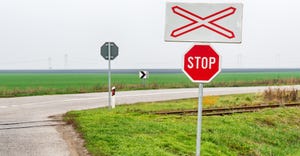The Recycling Story of a Buenos Aires Village
At a recycling rate of 12 percent Barrio Mugica, with its 40,000 people, is ahead in its region largely because of a three-waste stream collection service – the first such system in Buenos Aires. Named by the village as A Todo Reciclaje (ATR), or “Recycling for All,” the program is a collaboration between Delterra, who builds waste management and recycling systems, the local government, and resident waste workers.

Only about 8 percent of Argentina’s recyclable waste is actually recycled due to lacking collections infrastructure.
Even at a recycling rate of 12 percent Barrio Mugica, with its 40,000 people, is ahead in its region largely because of a three-waste stream collection service – the first such system in Buenos Aires.
Named by the village as A Todo Reciclaje (ATR), or “Recycling for All,” the program is a collaboration between Delterra, who builds waste management and recycling systems, the local government, and resident waste workers. The 400 local workers, a part of several cooperatives, are the backbone of ATR.
They show up at their neighbors’ doors to teach them how to separate material into trash, recyclables, and organics. They collect it; separate garbage that may be mixed with recoverable materials, which goes to landfill. Then they hand off recyclables and organics to motorcyclists who move them on to a nearby plant where other locals weigh, further separate, and bale material for sale, with the organics transferred to a treatment facility.
Sandra Irala typically collects 40 to 50 kilos a day (88 to 110 pounds) in large bins.
Teaching people, especially adults, was the hardest part of the job at first.
“Grownups do not always want to separate. They can be kind of rebels. But we keep encouraging them. Most neighbors have by now joined the crusade … it’s nice to see older people learning something new who want to leave a better, healthier planet for their kids,” Irala says.
The community leaves bags on hooks outside their doors with labels noting what’s in each bag: garbage, recyclables, or organics.
The children were intrigued from early on.
“I tell them this is how we clean the world,” Irala says.
Until recently, they were accustomed to seeing trash bags in the streets, some torn open by dogs and cats with their contents spilling out.
“The children ask, ‘Can I recycle this?’ When I tell them the products that were made from what they collected, they say, ‘Really? It’s not a bottle now? Now it’s a pencil? Or a plant holder or decoration for your table?’”
Sometimes Irala pulls up pictures on her cell phone to show neighbors bags, purses, and tablecloths she makes from recovered fabric, or jewelry she crafts from cans and water jugs.
Fabiola Rolón, like Irala, started out teaching her neighbors and collecting from them as a member of one cooperative of waste workers.
She’s moved into a new role: working with people from about 12 cooperatives, and teaching new workers, who sort about one ton a day, how to do it.
“I used to be shy. Now I deal with a lot of people, and it’s changed me. Neighbors and companies come out regularly to see what the program is about. To see how we work. And I take them on tours, introducing them to equipment and the plant,” she says.
Fabrizio Josue Ferrufino Castellon, one of a minority of male waste workers –the Barrio Mugica program is 67% women –spends his days sorting too.
“Until I joined ATR, I thought that source separating waste was not necessary. But I then realized that everyone should separate to protect the environment. I love that the community has joined in and started to separate waste at home. I’m convinced that the work we do has a significant impact,” he says.
Waste worker Yanina Diaz used to clean houses and offices, but sorting at the plant four hours a day is working better for her.
“Before I had no time for my two sons. I said this is enough; I need to enjoy my kids when they are little.”
She doesn’t have to earn a paycheck, as her family is among the region’s more fortunate who are financially comfortable. She just likes to work.
“But I wanted a job where I do not have to depend on a nanny. I am a mom and a worker.”
What Diaz does at work carries through at home. She composts on her enclosed patio, and she teaches her kids how to recycle.
“My kids will grow up with the mindset to recycle. They will teach their children, who will teach their children. It will become a tradition passed from one generation to another.
It has to be a tradition. As we celebrate Christmas, we have to celebrate recycling,” Diaz says.
Delterra has expanded the program to the neighboring city of Olavarría, with coverage on track to deliver to the full population of 120,000 by 2022.
The company is in the process of expanding into other Argentinian cities and Brazil, with a larger goal of setting up systems throughout Latin America.
While Delterra leads on setting up and implementing the program, it plans to eventually hand over operations fully to the local government.
“Through a collaborative process with the community, local government, and labor cooperatives, we developed effective, affordable methods to support residents in building new recycling habits,” says Federico di Penta, regional director, Latin America, for Delterra.
“These efforts will help the city to build a thriving recycling industry contributing to its transition into a circular economy.”
About the Author
You May Also Like




